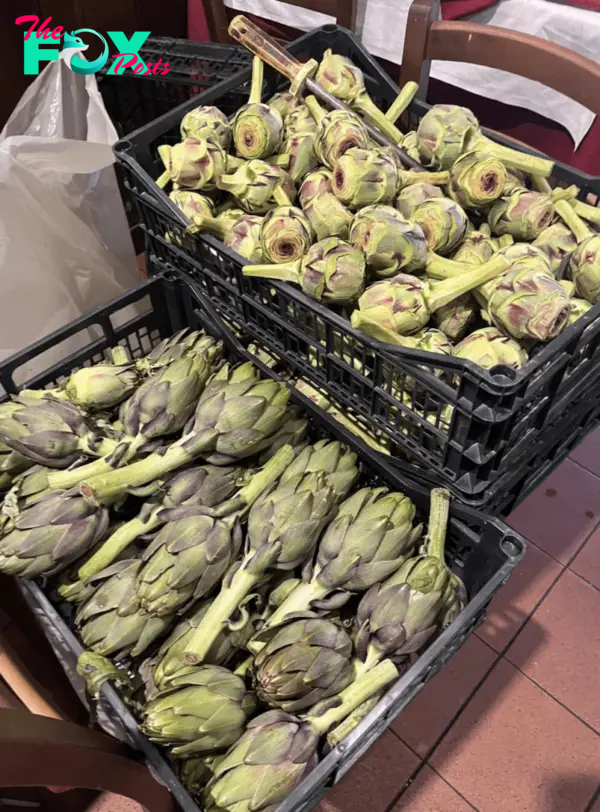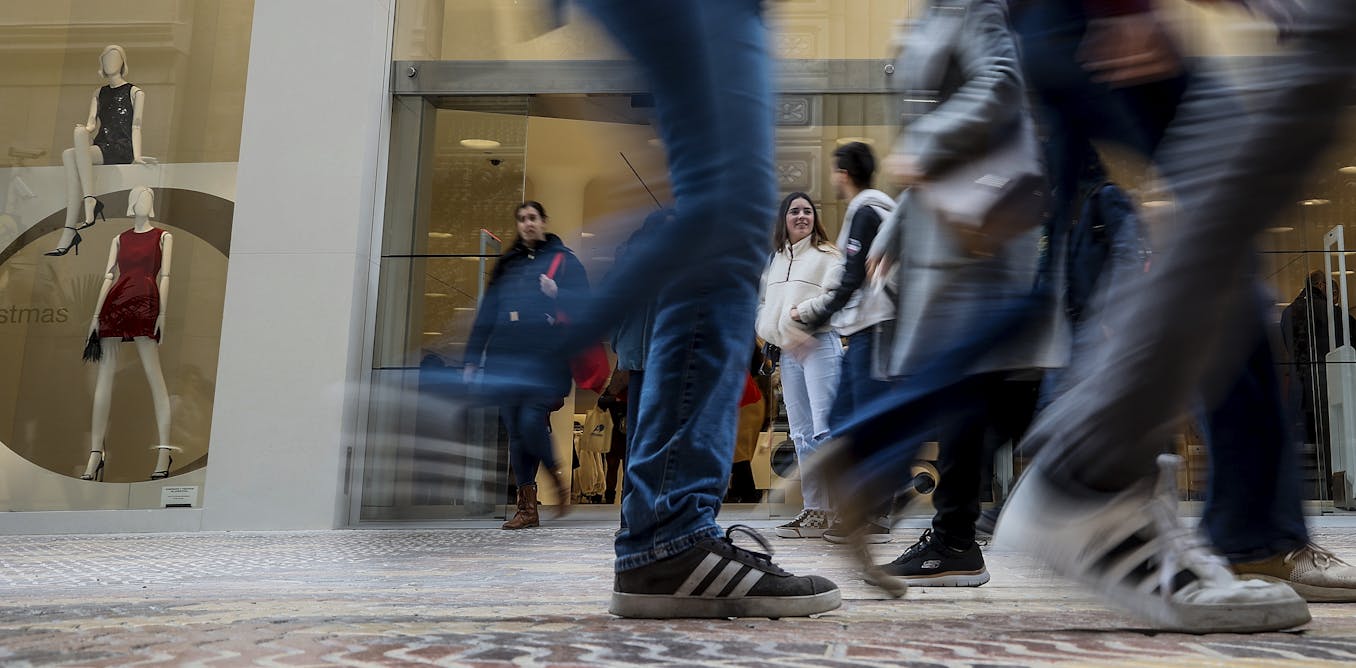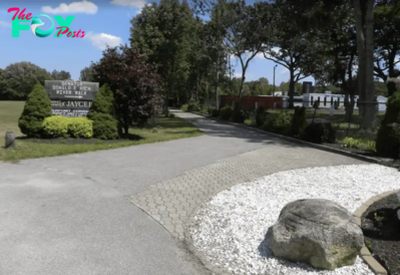Business
Passover notes from Rome – Chef Walter Potenza
Friends:
As a chef and a researcher, delving into the rich tapestry of Italian Cuisine is an electrifying journey through History, culture, and unparalleled traditions. And within this mosaic, the presence of Jewish communities adds layers of flavor and depth that are both fascinating and delicious. This Passover may not be as festive as others, and for apparent reasons, but let’s take a mental break and explore the intertwining narratives of Jewish heritage and Italian gAstronomy in this brief writing to celebrate the 2024 Passover.
Jewish roots in Italy run deep, dating back to 161 B.C. when Judas Maccabees dispatched a group to Rome. Despite historical adversities, Jewish communities have firmly embedded themselves within the Italian landscape, leaving an enduring legacy. This legacy is evident not only in historical monuments like the Arch of Titus, where the contribution of Jewish labor is immortalized, but also in the dishes that grace Italian tables.
Picture this:

- Crispy carciofi alla Giudia (deep-fried artichokes)
- Fragrant spinaci con pinoli e passerine (spinach with pine nuts and raisins)
- Dishes with unmistakable Hebraic origins
It’s not just about the food itself; it’s about the stories they carry and their journeys from ancient kitchens to modern dining tables.
Venture into the Jewish Ghettos of Rome, Venice, or the hidden gem of Pitigliano, and you’ll find a different culinary landscape than expected. There’s no corned beef on rye or matzo ball soup here. Instead, you’ll encounter a blend of tradition and integration, where Jewish culture thrives amidst Italian surroundings.
Although the Jewish population in Italy stands at around 30,000 today, their communities remain vibrant hubs of cultural and religious expression. This is especially evident during Passover, a cornerstone of the Jewish calendar.
Passover, or Pesach, holds a special place in the hearts of Italian Jews. It’s a time of remembrance, celebration, and, of course, feasting. On the first night of Passover, families gather around tables laden with symbolic foods, each dish a testament to centuries of tradition.
In Italy, the Passover Seder takes on a distinctive Italian flair. While the core rituals remain unchanged—unleavened bread, symbolic wine, and retelling the Exodus story—the accompanying dishes reflect the unique fusion of Jewish and Mediterranean cuisines.
Gone are the traditional sprigs of parsley, replaced by golden-fried carciofi alla giudia. The symbolic roasted egg gives way to stracciatella soup, a comforting nod to sacrifice and renewal. And the haroset, a mixture representing mortar, takes on an Italian twist with oranges, dates, raisins, and figs.
At the heart of the Italian Seder table lies culinary craftsmanship, with dishes like carpione—a marinated and fried fish delicacy—taking center stage. Forget beef brisket; in Italy, it’s all about mazzagne, a matzo-based lasagna bursting with flavor. And alongside, you’ll find insalata sefardita, a refreshing blend of romaine lettuce, dill, and green onions, symbolizing the bitterness of slavery.
But perhaps the most delightful surprise of all is the presence of Ricciarelli di Siena, those almond cookies usually associated with Christmas. Yet, research suggests their origins lie within the Jewish ghettos of Siena, a testament to the shared culinary heritage of Italy’s diverse communities.
As we savor these culinary delights, we also recognize the importance of preserving this ancient heritage for future explorations and generations. Thanks to a renewed interest in ethnic cuisine, led by cooKBOok authors like Giuseppe Maffioli, Edda S. Machlin, and Joyce Goldstein, the rich tapestry of Jewish Italian cuisine is experiencing a revival.
It’s a celebration of History, culture, and the unspoken universal language of great food that brings us all together.
Italian Passover customs and Recipes – Ghila Sanders
Traditional Italian Ciambellette Recipe
Ingredients
Three eggs
½ cup extra virgin olive oil
¾ cup sugar
2 cups flour (approximately)
Zest from one orange and one lemon
A pinch of salt
Preparation
Preheat the oven to 350 degrees.
Set a timer for 18 minutes. Make sure workspaces are clean and that no flour is on any surface. Beat eggs with sugar and oil, then add flour, salt, and zest. The dough should not stick but be smooth and workable.
Roll pastry in circular strips ½ inch in diameter and 3-4 inches long. Shape like mini donuts. All of this should be done BEFORE the timer goes off for the cookies to follow Jewish tradition. Line a baking sheet with parchment paper and bake for 25-30 minutes or until browned.
Here is a common question about Passover: What is it celebrating?
The Book of Leviticus describes the Festival of Matzoth as the Festival of Matzoth. The holiday is explicitly described as beginning at dusk on the fourteenth day of the first month, traditionally held as the month of Nissan. This begins a week-long festival of unleavened bread, the first and last days of which will be days of no work (a yom tov).
The Passover sacrifice also marked the holiday, and its importance was reaffirmed in both the Book of Kings 2 and the Book of Chronicles 2, where Judah’s king, Josiah, restored the celebration of Passover after an ancient text was found.
Aside from being a springtime festival, Passover is also a pilgrimage holiday. During Passover, Jews were required to come to Jerusalem and make offerings at the Temple on what is now the Temple Mount. This included the famous Paschal lamb sacrifice, which has not been performed since the destruction of the Temple.
However, one of the most essential parts of the holiday is its connection to the story of the Exodus. The holidays commemorate when God “passed over” the homes of the Jews of Egypt during His slaughter of the Egyptian firstborns. It also recalls how the Jews left their lives of slavery, going to the desert for 40 years. This is why one of the most essential requirements of Passover is to remember the story of Exodus.
What is the Passover Seder?
The Passover Seder is one of the most recognizable parts of the holiday. It’s a long feast on the first night of the holiday and the second night outside of Israel. The feast is organized into several sections, each with its own rules, as in a book called Haggadah. In addition, four cups of wine must be drunk during the Seder, each one at different points, and they are drunk while reclining to the left. {Trusted Reference}
www.chefwalterscookingschool.com
www.flavorsandknowledgetours.com
___
{Heading Image Proprietary F + K }

Chef Walters Podcasts
www.chefwalterscookingschool.com
-

 Business23h ago
Business23h agoUS House passes measure that could punish nonprofits Treasury Department decides are ‘terrorist’
-

 Business23h ago
Business23h agoFast fashion may seem cheap, but it’s taking a costly toll on the planet − and on millions of young customers
-

 Business2d ago
Business2d agoNew Information: These HV Big Lots Are Now Staying Open
-

 Business2d ago
Business2d agoBrush Fire Rages On Near Butternut In Great Barrington, MA
-

 Business2d ago
Business2d agoU.S. Antitrust Regulators Seek to Break Up Google, Force Sale of Chrome Browser
-

 Business2d ago
Business2d agoSuccessful White Men Alone Can’t Create America’s Economic Future
-

 Business2d ago
Business2d agoThe Rise of Silent Services
-

 Business3d ago
Business3d agoTim Latimer



























